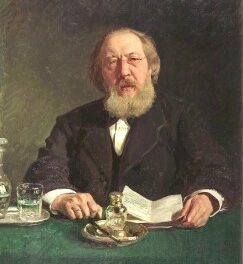We support our Publishers and Content Creators. You can view this story on their website by CLICKING HERE.
The romanticism in J.R.R. Tolkien’s great saga was inspired partly by the actions of King Jan Sobieski during the Battle of Vienna in 1683, when Christian Europe stemmed the advance of militant Islam.
 A minor observation in a recent essay began a series of connections that will please Catholics, conservatives, history hounds, and J.R.R. Tolkien fans. Carrie Gress was interviewing biographer Miltiades Varvounis for the National Catholic Register. Mr. Varvounis is the author of Jan Sobieski: The King Who Saved Europe. In the interview, he comments:
A minor observation in a recent essay began a series of connections that will please Catholics, conservatives, history hounds, and J.R.R. Tolkien fans. Carrie Gress was interviewing biographer Miltiades Varvounis for the National Catholic Register. Mr. Varvounis is the author of Jan Sobieski: The King Who Saved Europe. In the interview, he comments:
Jan Sobieski was one of the most illustrious rulers ever to command an army. He gained glory and fame in his thirties through his exceptional military skills and he was acknowledged as the greatest warrior-king of his time throughout the rest of his turbulent life. His patriotism, his strong faith and hope in God, his military reputation, his taste for arts and letters, and his talents—all these were legendary in his lifetime. Since World War II, no English work has been published about the king who saved Europe from the warriors of Islam at the Battle of Vienna (1683); a battle which was the inspiration for J.R.R. Tolkien’s epic cavalry charge of the Rohirrim that lifted the Siege of Minas Tirith in the Lord of the Rings trilogy.
For those who are unaware, the Battle of Vienna is on par with the Battle of Lepanto in Christian Europe’s centuries-long struggle to stem the advance of militant Islam. The battle took place on September 11-12, 1683. (Note the 9-11 date.) From July, the forces of the Ottoman Empire, led by Kara Mustafa, had besieged the city of Vienna. By September, the defenders were famished and exhausted. German and Bavarian armies had marched to their aid, but the huge and well-organized Ottoman forces continued their siege, digging trenches to hide from the defenders on the city walls, and digging tunnels to blow up the fortifications from below. King Jan Sobieski, in the meantime, was riding south from Poland with his well-drilled cavalry, the Flying Hussars.
Upon reaching Vienna, with the Ottoman army close to breaching the walls, Sobieski ordered a full attack on September 12th. In the early morning of that day, the united army of about 65,000–76,000 men (including 27,000 Poles) attacked a Turkish force of about 80,000–115,000 men. At about 17:00, after observing the infantry battle from the Kahlenberg hilltop, Sobieski led his cavalry in a massive charge down the hillside. The faltering Ottoman battle line was broken and the Ottoman forces scattered in disarray. About a half-hour later, Sobieski entered the deserted tent of Kara Mustafa and the Battle of Vienna ended.
Historians believe it was the largest cavalry charge in history. It not only swept away the besieging Ottoman armies, but also prepared the way for a mopping-up operation that eviscerated the Ottoman advance on Europe for ages to come. When reading accounts of the battle it is easy to agree with Mr. Varvounis’ observation that it was the inspiration for Tolkien’s “The Ride of the Rohirrim.”
The romanticism in Tolkien’s great saga was further inspired by another theme that echoes through history: the once and future King. The idea lingers in the Arthurian tales, but also resonates in the Hebrew concept of the Son of David who will one day return to claim the throne of his father. The story of the exiled king who waits patiently to return in triumph was historical in Jacobite claimants to the throne of England. Ever since James II’s deposition and exile, the Stuart claimants to the English throne lived abroad, sometimes plotting to re-take their rightful throne, sometimes waiting to be restored.
The most poignant and powerful Stuart story is that of James III—the son of the deposed James II. James III grew up watching his Protestant aunts and their husbands rule instead of him and his father. On the approaching death of Queen Anne, Lord Bolingbroke and Tory leader Robert Harley approached James III and offered him the throne of England if only he would convert to Protestantism. He refused and thus gave up his throne for his Catholic faith.
The theme of the noble, long-lost king inspired the creation of Tolkien’s Strider—Aragorn, King Ellesar—while Sobieski’s charge provided the inspiration for the victory at Minas Tirith. A further neat connection (hinting at Faramir’s wedding to Eowyn, the princess of Rohan) is that the heroic King James III of England was married to Maria Clementine Sobieska—the granddaughter of King Jan Sobieski, the hero of Vienna. Their sons were Charles Edward Stuart (Bonnie Prince Charlie) and Henry Benedict Stuart, who became a Catholic Cardinal and was known as the Cardinal Duke of York.
The great King Jan Sobieski is buried in Krakow’s Wawel Cathedral, while King James III and Maria Clementina (along with their sons) are buried in the crypt of St. Peter’s Basilica in the Vatican. There is a monument to the Royal Stuarts on one of the columns in the basilica, and Maria Clementina’s burial there links two of the noblest and heroic royal families of Europe.
This essay was first published here in June 2016.
The Imaginative Conservative applies the principle of appreciation to the discussion of culture and politics—we approach dialogue with magnanimity rather than with mere civility. Will you help us remain a refreshing oasis in the increasingly contentious arena of modern discourse? Please consider donating now.
The featured image is “Portrait of John III Sobieski with the Order of the Holy Spirit” (c. 1674), by the workshop of Daniel Schultz. It is in the public domain and appears courtesy of Wikimedia Commons.
Share This Story, Choose Your Platform!
Go to Top

 Conservative
Conservative  Search
Search Trending
Trending Current News
Current News 





